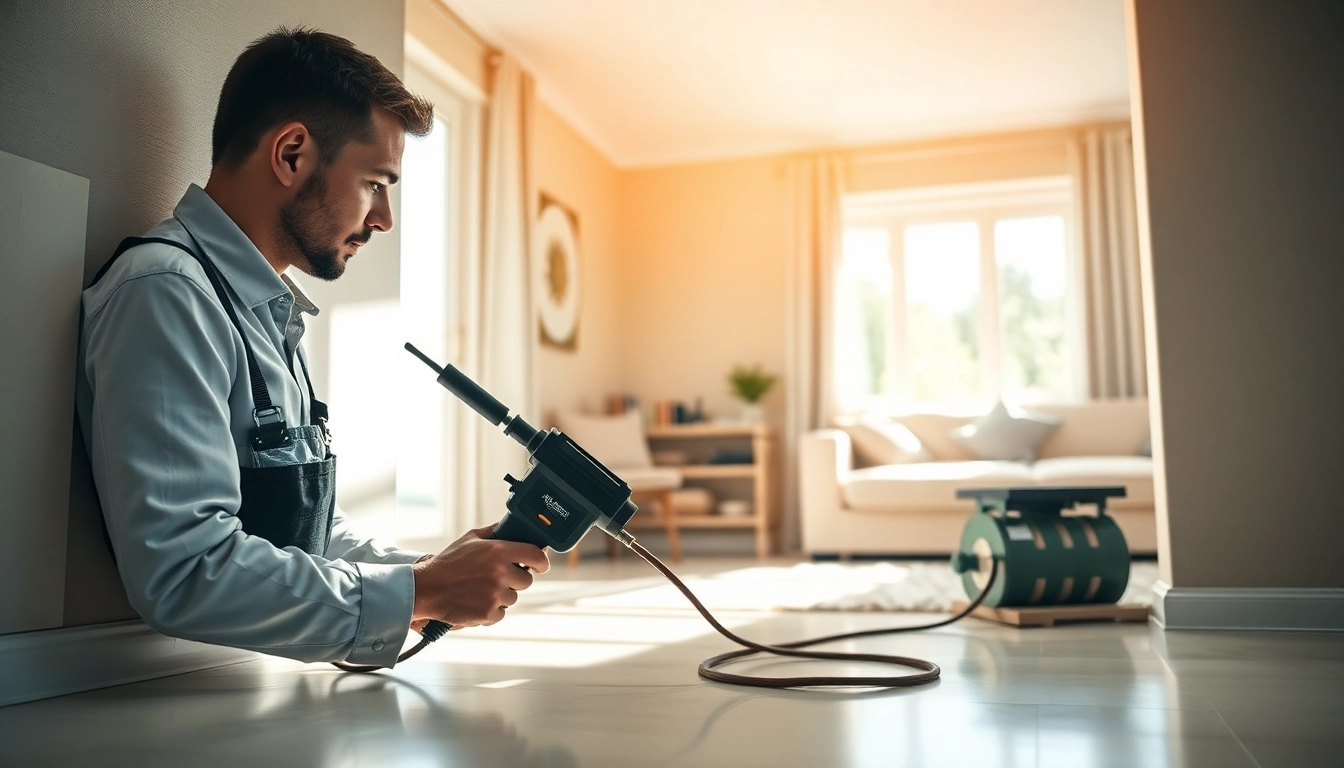The Essential Role of Kitchen Fitters
When it comes to renovating homes, especially the kitchen, the expertise of kitchen fitters becomes invaluable. A well-fitted kitchen can significantly enhance the overall aesthetics and functionality of a home’s most essential area. Kitchen fitters are skilled professionals who specialize in installing, repairing, and maintaining kitchen components, transforming a collection of cabinets, countertops, and appliances into a cohesive and organized space. Without expert installation, even the most beautifully designed kitchens can fall into disarray, losing both utility and appeal.
Understanding What Kitchen Fitters Do
Kitchen fitters play a multifaceted role in kitchen renovations. Their primary tasks include:
- Taking precise measurements of the kitchen space to ensure accurate installation.
- Creating a layout plan that optimizes both functionality and aesthetics.
- Installing cabinets, countertops, sinks, faucets, and other fixtures.
- Ensuring that all appliances are installed correctly and safely, following building codes and manufacturer guidelines.
- Managing plumbing and electrical connections, often collaborating with specialists in those fields.
- Providing insights on materials, styles, and the overall design aesthetic suited to the homeowner’s preferences.
- Completing finishing touches, such as sealing joints and ensuring everything is level and aligned.
Beyond just fitting, kitchen fitters are often seen as consultants, helping homeowners make informed decisions about their kitchen spaces. They bring a wealth of knowledge about current trends, materials, and technologies that can help enhance the kitchen’s functionality and aesthetic appeal.
Key Skills and Qualifications of Expert Fitters
To be effective, a kitchen fitter must possess a specific set of skills and qualifications. Key skills include:
- Technical Knowledge: Understanding the intricacies of kitchen design, plumbing, and electrical systems.
- Attention to Detail: Precision in measurement and installation can make or break a kitchen layout.
- Problem-Solving Abilities: Addressing unexpected challenges during installation swiftly.
- Communication Skills: Effectively liaising with clients, suppliers, and other contractors.
- Project Management: Overseeing the entire installation process, ensuring timelines and budgets are adhered to.
Many kitchen fitters come from related trades such as carpentry, plumbing, or electrical work, often leading to certification or apprenticeships that solidify their expertise. Continuous education is essential, as trends and technologies evolve, so seeking fitters who engage in ongoing training can be beneficial.
Why Hiring Professionals Matters
The importance of hiring qualified kitchen fitters cannot be overstated. Professional fitters ensure that:
- Installations are completed to a high standard, reducing the risk of future issues.
- Liabilities are minimized—licensed professionals often have insurance to cover potential damages.
- Complex tasks like plumbing and electrical installations comply with local regulations.
- Homeowners save time and stress, as professionals can move through the project more efficiently.
Ultimately, hiring an experienced professional can lead to a successful and stress-free kitchen renovation experience, translating into long-term satisfaction and increased home value.
Choosing the Right Kitchen Fitter
With so many options available, choosing the right kitchen fitter requires careful consideration. It’s essential to find a reliable and experienced professional that aligns with your vision and budget.
Factors to Consider When Selecting Fitters
When selecting a kitchen fitter, take into account the following factors:
- Experience: How long have they been in the business? A fitter with a solid track record is often more trustworthy.
- Portfolio: Review past work to assess their style and skill level. Look for diverse projects to gauge their adaptability.
- Specialization: Some fitters may focus on particular styles or materials, which can be a fit depending on your kitchen needs.
- References: Ask for client references or testimonials to better understand their reputation.
- Quotes: Gather multiple quotes to compare prices and services offered.
How to Validate Fitter Credentials
Before hiring, it is crucial to validate a fitter’s credentials. Ensure that they are:
- Licensed where necessary, since many regions require professionals to hold specific licenses for plumbing and electrical work.
- Insured, providing liability coverage and protection for both parties in case of accidents.
- Certified through relevant professional bodies, as certifications signify adherence to industry standards.
Additionally, checking with local trade associations may yield information about complaints or disciplinary actions, further aiding in your decision-making process.
Reading and Interpreting Reviews
Client reviews can be an excellent resource in your search for a kitchen fitter. Here’s how to interpret them effectively:
- Look for Patterns: A single negative review may not be telling, but ask yourself if multiple reviews point to the same issue.
- Consider the Positive: What do clients praise most? Consistent compliments about timeliness or communication might demonstrate reliability.
- Analyze Response to Feedback: How does the fitter respond to negative feedback? Professional responses can indicate a commitment to service.
Reviews can often pinpoint strengths and weaknesses, providing insight that can lead to informed decisions.
Costing Your Kitchen Fitting Project
Understanding the financial implications of kitchen fitting is vital for homeowners planning a renovation project. Budgeting appropriately can help avoid unexpected costs down the line.
Average Costs Involved in Hiring Kitchen Fitters
The average cost of hiring kitchen fitters can vary significantly depending on several factors, including location, the complexity of the job, and the professional’s experience. Typically, homeowners might expect:
- Hourly rates ranging from $40 to $150, depending on the fitter’s expertise.
- Overall project costs typically lying between $2,000 to $10,000, inclusive of materials and labor.
- Additional costs if structural changes are necessary, which may involve additional permits and specialists.
Gathering detailed quotes before beginning the project will enable a better understanding of all potential costs involved.
Hidden Costs to Watch Out For
While planning, it’s essential not to overlook hidden costs that can creep into the project budget:
- Unforeseen Structural Issues: Discovering plumbing or electrical issues after work begins can lead to unexpected charges.
- Design Changes: Making alterations to the design after work starts can lead to increased labor and materials costs.
- Delivery Charges: Some quotes may not include delivery costs for materials or appliances, which can add up quickly.
- Cleaning Fees: Ensure you understand whether cleanup is included post-installation, as some fitters may charge for this service.
By anticipating these potential costs, homeowners can budget more effectively and avoid project delays.
Budgeting Tips for Homeowners
To manage costs effectively, consider these budgeting tips:
- Establish a Clear Budget: Define how much you can afford to spend before shopping for materials and services.
- Prioritize Essentials: Focus spending on critical components first and determine where you can potentially scale back without sacrificing quality.
- Contingency Fund: Set aside an additional 10% to 20% of your budget for unexpected costs.
By following these tips, you’ll be better prepared to manage the financial aspects of your kitchen renovation efficiently.
Preparing for Kitchen Fitting Installation
Getting ready for installation is as crucial as the fitting process itself; having clear communication and planning can enhance the entire experience.
What to Discuss with Your Kitchen Fitter
Before work begins, it’s pivotal to have thorough discussions with your kitchen fitter. Consider covering:
- Timeline: Establish a realistic timeline that allows for unexpected delays without causing major disruptions.
- Design Details: Ensure all design elements, including materials and appliances, are agreed upon beforehand.
- Payment Structure: Clear agreements on payment terms can prevent misunderstandings later.
These pre-installation discussions set the groundwork for a successful project and foster a good relationship between you and your fitter.
Creating an Efficient Workflow
To facilitate an efficient workflow during installation, homeowners can take proactive steps:
- Clear the Area: Remove any furniture, appliances, and personal items from the kitchen to give fitters easy access.
- Designate a Work Area: If possible, create a space for installers to keep their tools and materials organized.
- Coordinate with Other Contractors: If additional specialists are involved, ensure their schedules align to avoid traffic congestion.
Streamlined access and communication help residential projects progress smoothly.
Design Considerations and Common Mistakes
When planning your kitchen design, be wary of common pitfalls:
- Overcrowding the Space: Aim for functional layouts that avoid cramping everything into one area, which can hinder movement.
- Ignoring the Triangle Rule: Ensure that the refrigerator, stove, and sink are in a triangular layout for optimal workflow.
- Overlooking Lighting: A well-lit kitchen prevents accidents and enhances usability—consider task and ambient lighting.
Fostering good design principles from the beginning sets the tone for a kitchen that not only looks good but functions efficiently.
Maintenance and Aftercare for Newly Fitted Kitchens
Once your kitchen is fitted, proper maintenance is essential for longevity. Taking care of your investment ensures that it continues to perform and look its best.
Guidelines for Kitchen Maintenance
Follow these guidelines to maintain your new kitchen:
- Regular Cleaning: Employ products that suit your countertops and cabinetry to avoid damage.
- Inspect Plumbing: Check for leaks or dampness around sinks and appliances regularly.
- Maintain Appliances: Follow the manufacturer’s recommendations for appliance upkeep, including regular filter changes.
Routine maintenance protects your investment and helps avoid costly repairs.
What to Expect After Installation
Once installation is complete, homeowners should expect:
- Final Walkthrough: Conduct a final inspection with the fitter to ensure everything meets expectations and address any concerns.
- Instruction Manual: You may receive care instructions or an appliance warranty.
- Post-Installation Questions: Keep communication open with your fitter for recommendations on ongoing maintenance and usage tips.
This transitional phase can help you adapt seamlessly to your new kitchen space and ensure you use it to its fullest potential.
Common Issues and Solutions
Even with a professional installation, some common issues may arise:
- Uneven Cabinets: If cabinets are misaligned, check with your fitter to adjust them as needed.
- Cabinet Door Swelling: Ensure that the kitchen maintains a consistent humidity level to prevent warping.
- Worn Grout: Regularly inspect grouting between tiles or countertops and repair cracks promptly to avoid moisture issues.
Addressing issues immediately can mitigate larger problems in the future, leading to a long-lasting and beautiful kitchen space.



